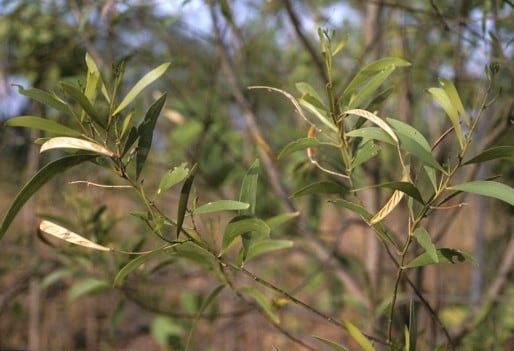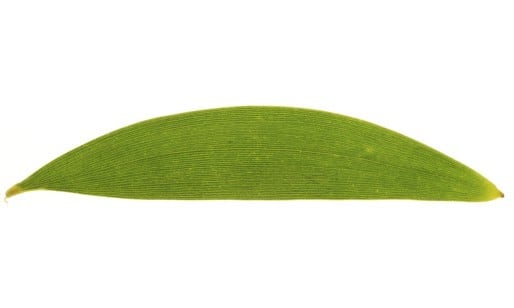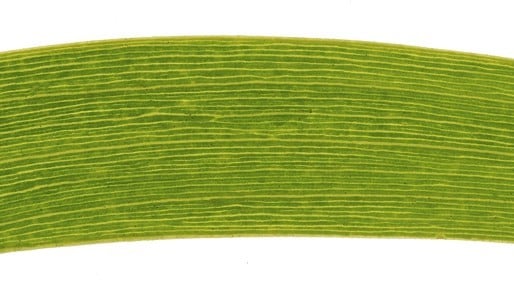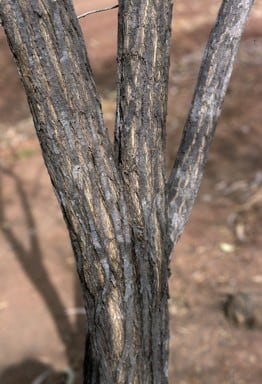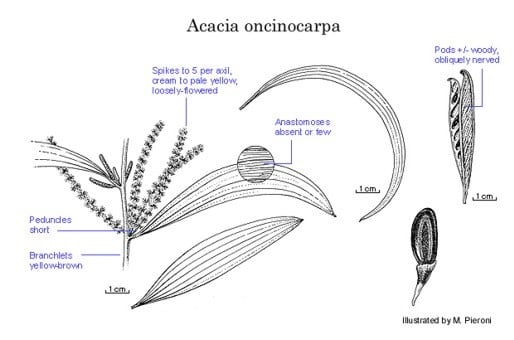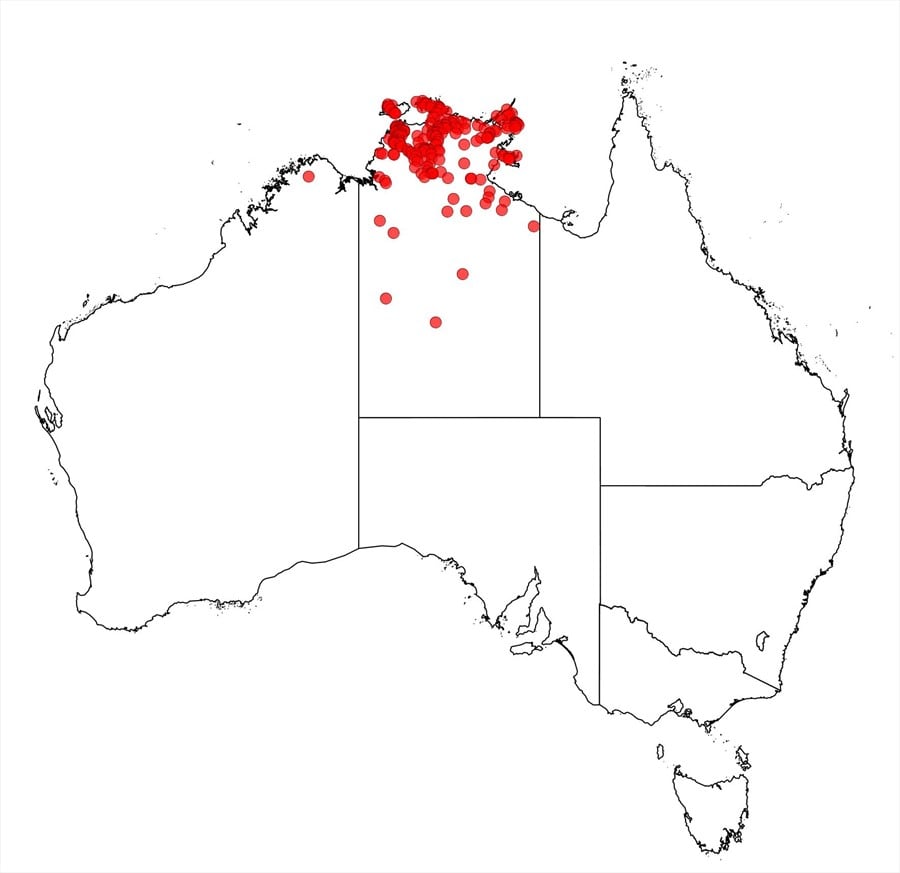Acacia oncinocarpa Benth.
WATTLE
Acacias of Australia
Family
Fabaceae
Distribution
Occurs in tropical N.T., N of 16ºS; common in Arnhem Land.
Description
Shrub or tree 0.5–5 m high, prostrate in exposed coastal areas, rounded, resinous. Bark smooth or flaky, grey to brown. Branchlets angular towards apices, with reddish brown granules. Phyllodes narrowly elliptic to elliptic or sometimes narrowly oblanceolate, straight or curved, mostly 6–15 cm long, (4–) 7–29 mm wide, chartaceous to subcoriaceous, glabrous or hoary, with 3–5 prominent longitudinal nerves of which lower 2 not often confluent with margin near base, sometimes 2 or 3 semiprominent parallel nerves; minor nerves 3–6 per mm, sometimes sparingly anastomosing; gland 1, ±inconspicuous, 2–6 (–10) mm above pulvinus. Spikes up to 5 in axils, 2.5–8 cm long, loosely flowered, pale yellow to cream-coloured. Flowers 5-merous, rarely 4-merous, delicate; calyx membranous, 0.4–0.6 mm long, dissected to 1/5–1/3, glabrous or with reddish brown granules towards sepal apices; corolla 0.9–1.1 mm long, dissected to 1/2–2/3, glabrous; ovary glabrous. Pods erect, very narrowly oblanceolate to linear, basally narrowed, flat, straight-sided, 5–11 cm long, 4–10 mm wide, woody, glabrous, obliquely reticulately nerved, curling upwards from apex after dehiscence; seed partitions and margins thick. Seeds oblique, oblong-elliptic, 4–7 mm long, brown; areole narrowly oblong, open; funicle-aril narrowly conical.
Phenology
Flowers Mar.–Aug.
Habitat
Grows in red or grey sand or loam, often gravelly soil, on sandstone, granite or laterite, in eucalypt or Melaleuca woodland, forest or shrubland, often in coastal sand dune or cliff areas.
Specimens
N.T.: Melville Is., C.Dunlop 3053 (BRI, DNA, NSW); E of Oenpelli, Nimburrah road, R.Pullen 9505 (CANB, MEL); 41 km S of Katherine, King R. crossing, M.D.Tindale 6065 & C.Dunlop (BRI, CANB, K, NSW, UNSW, Z).
Notes
A variable species in need of critical revision. Related to A. oligoneura which has mostly narrowly oblanceolate phyllodes (broadest above middle) with an open reticulate nervation, and brighter yellow inflorescences. Both species have similar flowers and reddish brown granules on their branchlets, phyllodes, bracteole laminae and sepal apices. Also seemingly related to synantha.
FOA Reference
Data derived from Flora of Australia Volumes 11A (2001), 11B (2001) and 12 (1998), products of ABRS, ©Commonwealth of Australia
Author
Minor edits by B.R.Maslin & J.Rogers
Dr M.D.Tindale and Dr P.G.Kodela with the assistance of M.Bedward, S.J.Davies, C.Herscovitch, D.A.Keith and/or D.A.Morrison
This identification key and fact sheets are available as a mobile application:
URL: https://apps.lucidcentral.org/wattle/
© Copyright 2018. All rights reserved.



